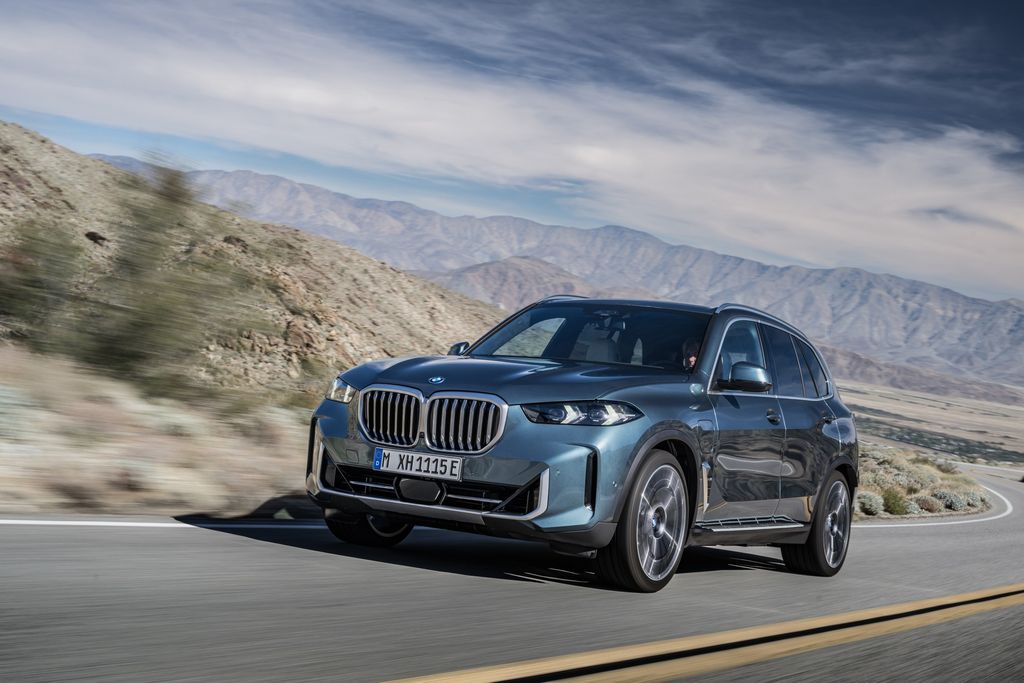
The EV experience is improving quickly. Charging infrastructure is improving. If you own a single-family home with a Level 2 charger, owning an electric SUV can feel mostly seamless. But traveling long distances in an electric vehicle remains more of a pain than the alternative. For some buyers, a plug-in hybrid SUV may offer a compelling and, if you charge diligently, nearly as efficient alternative.
Plug-in hybrid SUVs can offer a best-of-both-worlds solution. They offer enough range to do most everyday driving under electric power, but they also provide gasoline flexibility to take the stress out of longer journeys. A plug-in hybrid SUV may not be the ultimate solution for efficient travel for most people—as EVs are simpler and better for the environment—but it may be the best option for many buyers right now.
Plug-in hybrid SUVs can look different. But the best need to meet a few simple criteria. One is range. A plug-in hybrid SUV needs enough all-electric range for plugging in to be worth the effort. The hybrid battery system needs to be well-integrated and easy-to-use. And plug-in hybrid SUVs are still SUVs. So factors we would look at in a combustion crossover – practicality, luxury, overall driving flair – remain fair game here.
How We Test
InsideEVs editors have dozens of years of combined experience testing cars and reporting on the changing car landscape. Throughout the year, we test dozens of electrified vehicles, at first-drive events, during week-long reviews and during our annual Breakthrough Awards testing. From the streets of Shanghai to our own driveways, we drive everything so we can give you the best possible information.
For this article, we focused on the best plug-in hybrid SUVs available in the North American car market.
Best Plug-in Hybrid SUV: Volvo XC60

Battery: 18.8 kWh
EV Range: 35 miles
Fuel Economy: 28 mpg
Starting MSRP: $59,345
Volvo has not quite hit the mark with its EVs yet. But the brand excels at basically three things right now: safety, Scandinavian minimalist luxury, and building plug-in hybrids. The XC60 Plug-In Hybrid (formerly the XC60 Recharge) delivers on all three of those things. As Jeff Perez noted in his review for Motor1, the XC60 Plug-In Hybrid “ticks all the right boxes” and is what most buyers want from a luxury SUV: “stylish, upscale, and nice to drive.”
The XC60 Plug-in Hybrid sounds like it would be a performance monster with 455 hp, 523 lb-ft of torque and a 0 to 60 mph time of 4.5 seconds. But that’s not really the Volvo way. The XC60’s true superpower is its EV range. The 2022 refresh added a larger battery that doubled the range to about 35 miles. That’s enough for many driver to handle their daily commutes and errands on a single charge.
When I tested the XC60 Recharge on a weeklong loan, I averaged more than 100 mpg doing my daily routine for the first few days. The “proper” 110-mile test drive that drained the battery and involve some spirited pedal work still averaged 40 mpg over the course of the trip.
Best Luxury Plug-in Hybrid SUV: BMW X5 xDrive50e

Battery: 19.2 kWh
EV Range: 39 miles
Fuel Economy: 22 mpg
Starting MSRP: $75,200
"BMW X5 xDrive50e" isn’t the sexiest name for an SUV. But having to repeat that mouthful is worth it for one of the best all-around SUVs–of any type–on the market. The X5 xDrive50e delivers muscle car-like acceleration with Prius-esque fuel economy. Car and Driver clocked it under 4.0 seconds from 0-60 mph; I averaged 54.3 mpg over a not particularly efficient week. It also has plenty of cargo space and can tow like a midsize truck, with nearly 6,000 lbs of towing capacity.
The X5 xDrive50e is among the longest range PHEVs on the market, with an EPA-estimated 39 miles of all-electric range. And it doesn’t skimp on the “ultimate driving” experience with a buttery-smooth BMW inline-six integrated with the electric motor to provide 483 hp and 516 lb-ft of torque. A recent upgrade resolved the SUV’s one weakness; it’s now capable of 11 kW home charging, fixing the old model's slow-charging issue.
The BMW X5 xDrive50e gets the luxury nod and not best all-around nod due to pricing. The $75,200 starting MSRP is higher than the BMW iX electric car. Realistic builds will take this car to around $80,000. And that’s a price point where you may get more value from a fully electric alternative.
Best 7-Seater Plug-in Hybrid SUV: Volvo XC90 Plug-In Hybrid

Battery: 18.8 kWh
EV Range: 33 miles
Fuel Economy: 27 mpg
Starting MSRP: $74,295
The Volvo XC90 Plug-In Hybrid has been in production for 10 years. It has weathered multiple Volvo nomenclature changes. It’s not the newest car on the market. But it remains the class of the three-row plug-in hybrid SUV segment. And it just received a refresh with updated looks and new tech. As Brian Silvestro noted when reviewing the 2025 model for Motor1, “the XC90 is a pleasant place to spend time. It’s quiet and isolated, with subdued road manners, light steering, and agreeable handling.”
With 455 combined hp and 523 lb-ft of torque 0-60 mph, the XC90 PHEV sounds sportier than it seems in everyday driving. But if you’re diligent about plugging in, its 33 miles of range is enough to do almost all of that everyday driving on electric power. And it’s reasonably efficient running on gas for long road trips; I earned 27 mpg over a 300-mile trek with no battery. If you’re driving it as a two-row SUV most of the time, it offers a spacious 34.5 cubic feet of cargo space. And as you’d expect from a Volvo, the XC90 PHEV receives the highest IIHS Top Safety Pick+ rating.
Best Compact Plug-in Hybrid SUV: Toyota RAV4 Plug-In Hybrid

Battery: 18.1 kWh
EV Range: 42 miles
Fuel Economy: 38 mpg
Starting MSRP: $44,565
The Toyota RAV4 is America’s favorite SUV. It’s practical, capable, and reliable. The RAV4 Plug-in Hybrid (formerly the RAV4 Prime) is the best version of RAV4—and maybe the best electrified EV alternative. It offers all the RAV4ness along with an impressive 42 miles of electric range, 302 horsepower that could rocket it from 0 to 60 mph faster than any Toyota except the Supra, and, as our reviewer Gary Lieber noted, a surprisingly “smooth, well-dampened ride.” Toyota’s only faux pas was not being able to build enough of them.
Big changes are coming for the Toyota RAV4 Plug-in Hybrid in 2026. But they should only make the crossover even better. The new RAV4 Plug-in Hybrid is getting boxy good looks, a bump up to 320 horsepower, and a larger battery that can deliver up to 50 miles of range. Upper trims will even get DC fast charging.
Best Plug-In Hybrid SUV For Off-Roading: Jeep Wrangler 4xe

Battery: 17.3 kWh
EV Range: 22 miles
Fuel Economy: 20 mpg
Starting MSRP: $50,695
The Jeep Wrangler is an American institution. It is a formidable tool for tackling terrain. And unlike the Ford Bronco, Jeep offers a PHEV version, the Wrangler 4xe. It’s still very much a Wrangler. It sacrifices little of the Wrangler’s trademark off-road capability. And it packs a formidable 375 hp and 470 lb-ft of torque (the same as the V8-powered Wrangler 392).
The Wrangler 4xe is far from the most efficient PHEV, with just 22 miles of EV range and a 20 mpg combined rating the rest of the time. But it’s the only one that can deliver the off-road performance of a Jeep Wrangler. And as Tom Moloughney noted in his review, you can “attain a very respectable average MPG rating” if you’re diligent about charging between trips. And “very respectable average MPG rating” is something seldom said about any combustion Wrangler.
Best Affordable Plug-in Hybrid SUV: Kia Niro Plug-in Hybrid

Battery: 11.1 kWh
EV Range: 33 miles
Fuel Economy: 48 mpg
Starting MSRP: $34,490
Kia offers the Niro as a plug-in hybrid, a conventional hybrid and a full EV. It’s not as striking to look at as Kia’s other offerings, like the all-electric EV9. The added oomph from the larger electric motor in the PHEV—180 hp—also isn't going to get your pulse racing. What the Niro PHEV does do is offer a somewhat similar value proposition to the Prius Plug-in Hybrid in SUV form.
The Niro PHEV offers 33 miles of EV-only range, most of the way to Prius PHEV range and enough to knock out most round-trip commutes. The EPA expects the Niro PHEV to do a still quite efficient 48 mpg when you’re not leaning entirely on the battery. And that’s pretty darn good efficiency for a car that starts at less than $35,000 MSRP.
Conclusion
There are plenty of compelling plug-in hybrid SUVs on the market right now. And with the EV transition facing roadblocks in the short term, expect manufacturers to invest in bringing more and more capable hybrid options to the market within the next few years. As batteries and engines both improve, your options should only get better over time.







